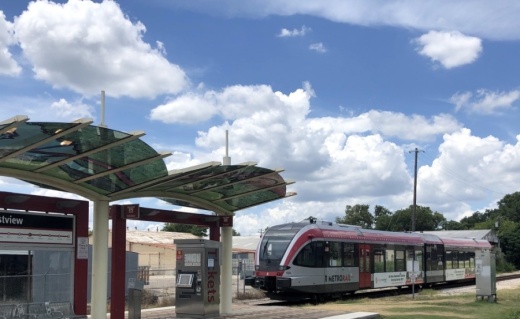The plan to build light rail lines connecting North Austin, South Austin and Southeast Austin neighborhoods to downtown, among other improvements, is on a path to the ballot box in Austin Nov. 4. Voters will be deciding whether they want to raise property taxes to fund the first $7.1 billion phase of the $10 billion plan, $3.85 billion of which would be paid for locally if Capital Metro can secure its projected 45% share of matching funds from the federal government.
The city is set to officially call the election between Aug. 12 and Aug. 14 in conjunction with the adoption of its budget.
On Aug. 7, City Council and Cap Metro made two key decisions to set up the final vote.
The first decision set up the rules for the governing board that will oversee how to spend the revenue related to Project Connect, should voters approve the tax rate increase. Once created, the board would make decisions to enter into contracts with construction companies, contractors and engineers as the system is built, and it would also be responsible for allocating the $300 million in anti-displacement measures built into the Project Connect plan.
The $300 million could be used for land banking—or buying land along the future transit lines to make sure affordable housing could later be built for residents—as well as home repair, rental subsidies, financial assistance for home owners or other strategies.
Many members of the public who spoke at the Aug. 7 joint meeting of City Council and the Cap Metro board expressed concern about the communities who could be affected by transit lines coming through their areas. Travis County Pct. 1 Commissioner Jeff Travillion said it will be up to local government leaders to make sure those communities see a benefit—something that was not a priority for local government in past decades.
"We have to confront our own history. We have to remember what has been done by our bodies," Travillion said.
The board, called the Austin Transit Partnership, will be made up of one Austin City Council Member, one member of the Cap Metro board, and three community members from Austin, each with 10 or more years of experience in a different field. One community expert would work in finance, another in engineering and construction, and the final member would be experienced in the field of community planning or sustainability.
If voters approve funding for Project Connect in November, Austin deputy chief financial officer Greg Canally said the board would be nominated by Jan. 1.
The second decision the two bodies made Aug. 7 finalized a contract with the voters. This does not officially call the election and put the decision on the ballot, but it does lay out the plan in detail, including the initial investment, the governance and the anti-displacement measures.
District 4 Council Member Greg Casar emphasized that the construction jobs created to build the transit system will present a benefit to working-class families during an economic recession. District 5 City Council Member Ann Kitchen added that the transportation improvements will be crucial to ensure Austin doesn't backslide into traffic problems after the coronavirus pandemic is gone.
"We're going to get past this, and there will be life after (COVID-19)," Kitchen said. "When we do, we're going to need a real transportation plan that eases congestion. We don't want to go back to the past."





